1964 Ferrari 330 GT - Reader Resto





















































|

|

|

|

|

|

|

|

|

|

|

|

|

|

|

|

|

|

|

|

|

|

|

|

|

|
After 36 years of ownership and a five-year resto, the owners of this stunning Ferrari have decided to let go
As with a lot of high-end cars, the history of Ferrari 330 GT #6203 can be tracked down fairly accurately. It was made by hand in 1964 at Maranello. It is known to be number 309 of the 330 GT Series I. It is also known to be number 29 of only 43 made in right-hand drive.
For current owner John Ellis who bought the Ferrari in 1983, the aspect of Maranello magic that drew him to it was his focus on the lovely V12 powerplant. John said: "Having worked as an automotive design engineer for major car manufacturers and having restored a number of rare and special cars, I knew all about the excellence of Ferrari’s engine designs.
"When the opportunity came up to buy a 19-year old GT 330 Series I for $18,000, I didn’t have to think about it for long. The sound of its powerful purr at idle suggested that it was going to be an exciting car to drive, and once I got behind the wheel, I found it just wanted to go."
| Read next: 1973 Ferrari Dino 246GT barn find
 Someone felt that an Italian hottie just had to be red
Someone felt that an Italian hottie just had to be red
As successor to the 250 GTE, the 330 GT Series I model had a sharper nose and tail, quad headlights and a wide grille. The installation of Koni adjustable shock absorbers improved handling, and further sure-footedness was enabled by a dual-circuit Dunlop braking system with discs all around, and wire wheels fitted with Pirelli Cinturato 205VR15 tyres.
Body design was by Pininfarina. One notable change was the canted twin headlight arrangement, with a 7-inch diameter outer lens and a 5-inch diameter inner. This gave the frontal aspect a slightly American look, which was very much in vogue in that country then.
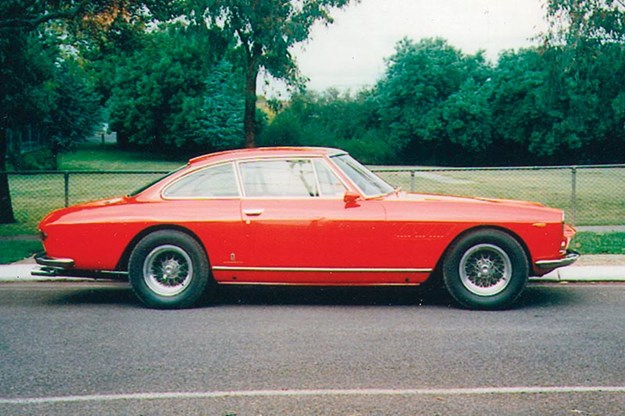
The general body lines became smoother and rounder apart from the angular headlight surround pods, and featured a bulbous, rounded tail providing a more voluminous boot, with horizontal rectangular one-piece rear light assemblies curving around the edges of the wings. The 50 mm increase in wheelbase to 2650mm, together with a redesigned interior, gave rear seat passengers additional leg- and head-room, without any sacrifice to that of the front seats. Construction was standard Ferrari practice for the period: large section oval main tubes with substantial cross bracing, and sub-assemblies welded to the main frame to support the body and ancillary equipment.
| Read next: Steve McQueen's Ferrari 275 GTB/4
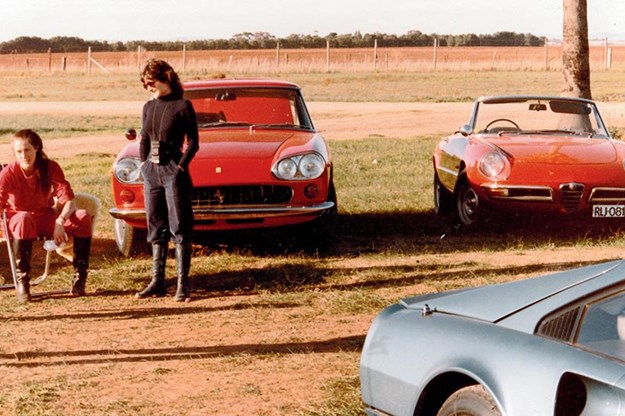 The good life – Sunday outings in the Ferrari
The good life – Sunday outings in the Ferrari
The model had independent front suspension, a rigid rear axle with leaf springs and telescopic shock absorbers, with power steering available in later examples.
The engine was a 4.0lt V12 with a single overhead camshaft per bank that produced a claimed 300hp. The engine was based on the original Colombo short-block design, but was slightly longer with increased bore centres to provide adequate waterways with the larger diameter cylinder bores.
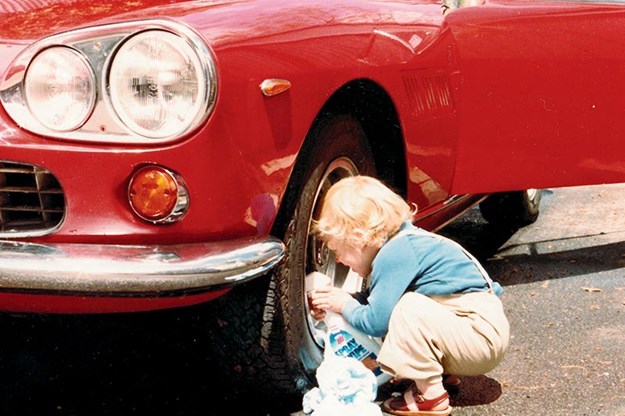
Total capacity is 3967cc with a bore and stroke of 77 x 71mm, with outside ‘v’ spark plug arrangement, a bank of three twin-choke Weber 40 DCZ/6 or 40 DFI carburettors and a twin coil and distributor ignition system.
The engine was coupled to a 4-speed, all-synchromesh gearbox, with an electronic overdrive fifth gear on most Series I cars.
| Past Blast: Ferrari 250 GTO recreation
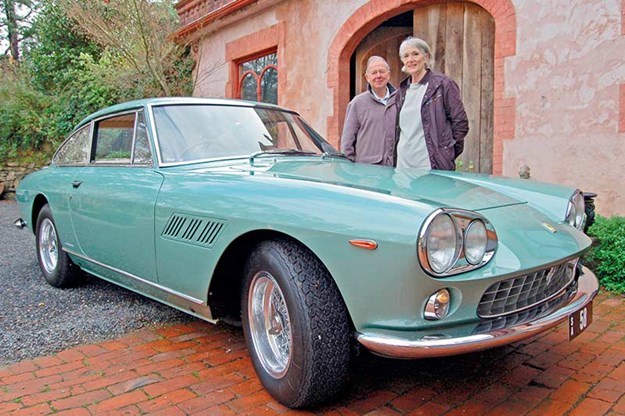 Soon to be ex-owners, John and Marj, appear to be missing the Ferrari already
Soon to be ex-owners, John and Marj, appear to be missing the Ferrari already
The 330 GT 2+2 Series I and II were produced from 1964 to 1967, then replaced by the 365 GT 2+2. During this production run, 625 Series I and 474 Series II vehicles were produced, which outsold the preceding 250 GT 2+2 model despite having had a similar production life span.
This version of the 2+2 concept proved to be very popular, and Enzo Ferrari himself is said to have favoured the use of a 330 GT Series I vehicle for some time.
Ferrari 330 GT #6203 arrived in Melbourne on the cargo ship, Ataio, on 11 November, 1964, imported by WH Lowe Pty Ltd. This was the fourth 330 GT to be imported to Australia. The car was then presented to the Australian motoring public at the Melbourne Motor Show early in 1965.
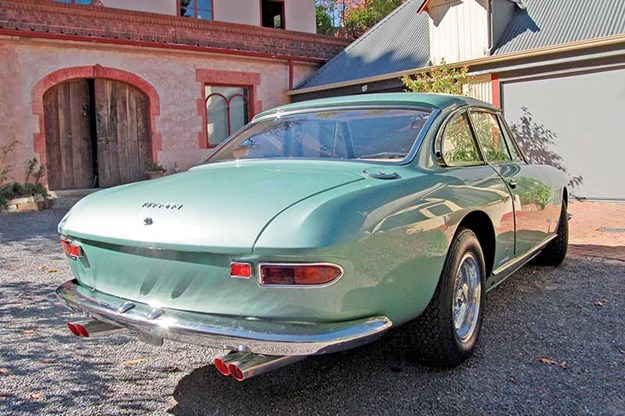 Four pipes offer a visual performance clue
Four pipes offer a visual performance clue
After featuring in the motor show, it was delivered through Scuderia Veloce Motors to its first owner in Sydney by Australian auto racing champion and team owner, David McKay. His experiences of the drive from Melbourne to Sydney were written up in a four-page article published in the August 1965 issue of Modern Motor magazine.
The restoration was a top-to-toe task undertaken over a five-year period from 2014 to 2019. The work was done primarily by three South Australian restoration businesses.
Tim Ringwood Restorations was the first business employed on the project, initially given just the task of rebuilding the engine. When the scope of the restoration was later expanded to include the rest of the car, Tim coordinated the work of other specialist outfits brought in to restore the bodywork and paint finish (Custom and Classic Cars) and the interior trimmings (Willshire Motor Trimmers).
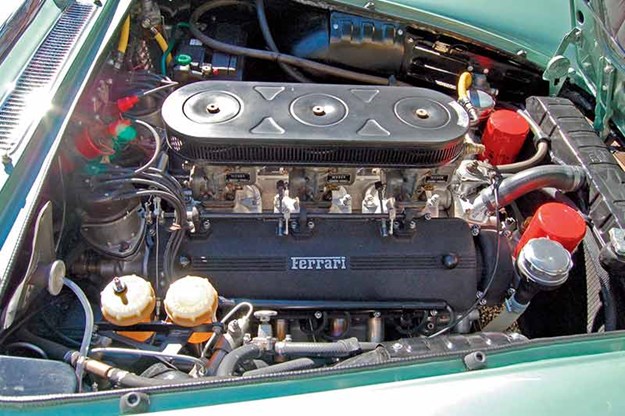 Ferrari’s classsy version of a ‘Tripower’ set-up – using Webers, of course
Ferrari’s classsy version of a ‘Tripower’ set-up – using Webers, of course
The engine was removed from the car to facilitate the rebuild and the car was partially dismantled for bodywork repairs.
The engine rebuild included: replacing or machining all moving parts and wear surfaces – cylinder liners, pistons, rings, connecting rods, gudgeon pins, crankshaft journals, bearings, valves, camshafts and timing chain; replacing the starter motor with a new high-torque unit; replacing all non-standard or burred fasteners with stainless steel equivalents; replacing the exhaust system with a stainless steel set-up.
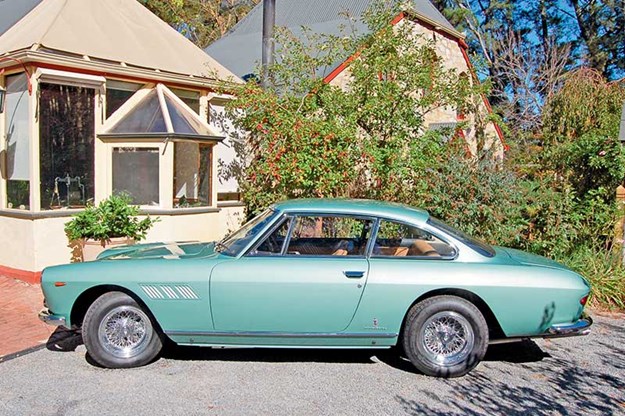 A sixties gem perfectly restored to its former beauty
A sixties gem perfectly restored to its former beauty
The car had accumulated various layers of paint and patches of acrylic filler over the years, and these were removed by hand with gel stripper, rather than sandblasting which can abrade the metal and harden it, with hardened metal causing the finisher’s files to slide over it rather than bite in during the metal finishing process.
When it came to rust, the worst damage was found in the door sills, parts of door panels, the rear parcel shelf and boot. The chassis, meanwhile, was found to be rust-free. The worst-affected parts were cut out and replaced with new steel, attached with oxy welding rather than MIG because oxy welds are softer, thus making the task of grinding back easier and a smoother finish attainable.
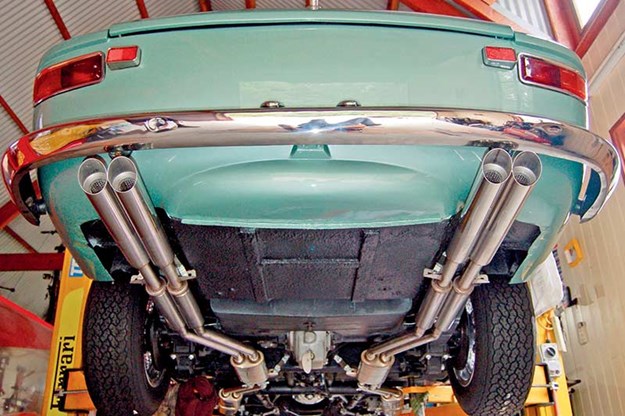 It’s a shame to hide the lovely exhaust system from view
It’s a shame to hide the lovely exhaust system from view
Meanwhile, some minor deformities found in the bodywork shape were corrected with panel-beating, and redundant holes were filled with welds before finish grinding.
A thick high-build primer coat was rubbed back by hand with coarse sandpaper to eliminate irregularities. This was overlaid by a thin primer, which was also rubbed back by hand, this time with 800-grade sandpaper. Having now achieved a perfectly smooth uniform surface, four thin coats of the metallic fawn-green paint were then applied followed by three thick coats of clear finish, with the top coat given a cut and polish for a deep lustre.
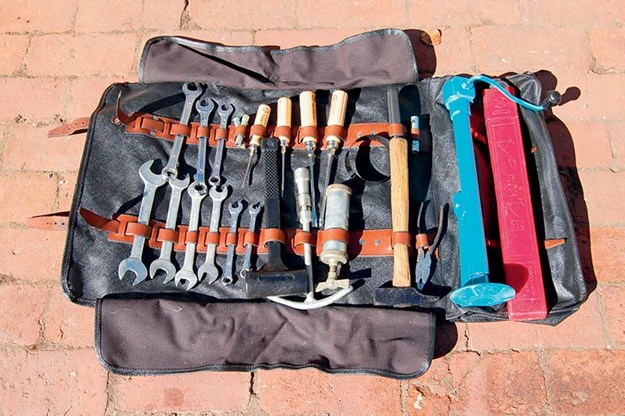 Yes, it comes with the toolkit
Yes, it comes with the toolkit
Other work done on the car included: suspension overhaul; relining brake master and slave cylinders with stainless steel inserts; new metal and neoprene brake lines; new brake servos; restoration of wheel hub spinners; overhaul of wheels by Ruote Borrani – rims cleaned and hubs and spokes replaced (new spokes tapered and made of stainless steel); seats re-trimmed in leather; new interior linings.
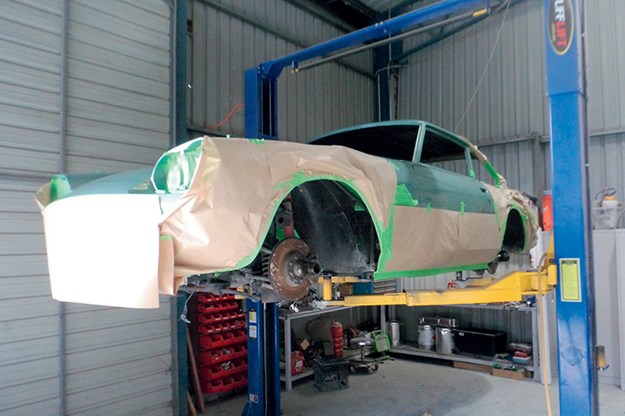 Finally, application of the colour coats commences
Finally, application of the colour coats commences
While John Ellis was in love with the car’s engine, his wife Marj was enthusiastic about the safety and comfort of the the Ferrari’s ride. She explained: "We occasionally drove it on Ferrari Club and Sporting Car Club outings, which took us to some lovely parts of South Australia and gave us the opportunity to stretch its ‘legs’ out on the open road. Some of those roads were in pretty poor shape, but the Ferrari coped with them brilliantly. On arrival, we often attracted a lot of interest because of the car’s capabilities as well as its elegance and rarity."
However after all those years of ownership she and John have reluctantly decided that it’s time for someone else to enjoy their now good-as-new Ferrari.

Top shelf trim
If you put your mind to it you can almost smell the lovely leather.
Vulnerabilities
 Rust is no respector of brands – sills and door lowers needed attention.
Rust is no respector of brands – sills and door lowers needed attention.
Accessory scars
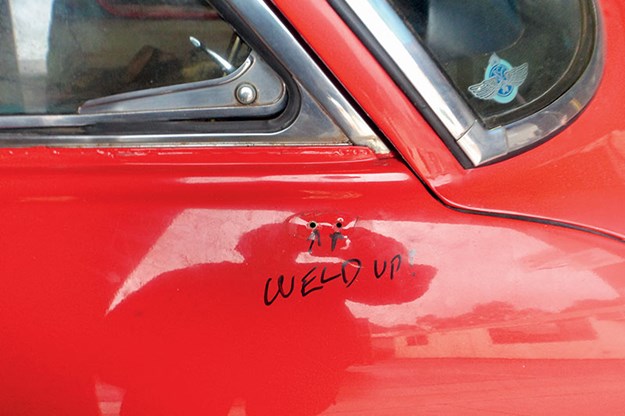 Drilling holes for an accessory mirror seemed like a good idea at the time.
Drilling holes for an accessory mirror seemed like a good idea at the time.
Nowhere to hide
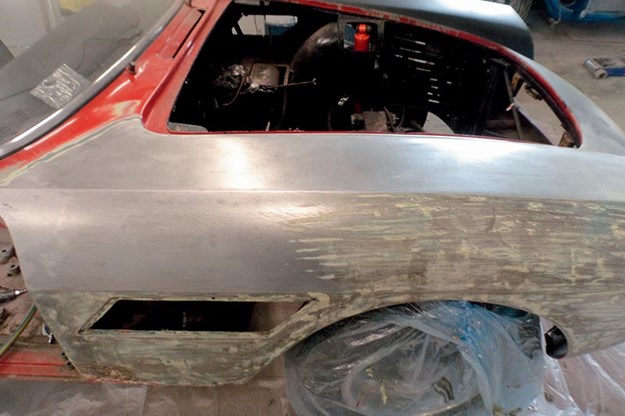 Once it’s back to bare metal the true condition can be assessed.
Once it’s back to bare metal the true condition can be assessed.
Coming good
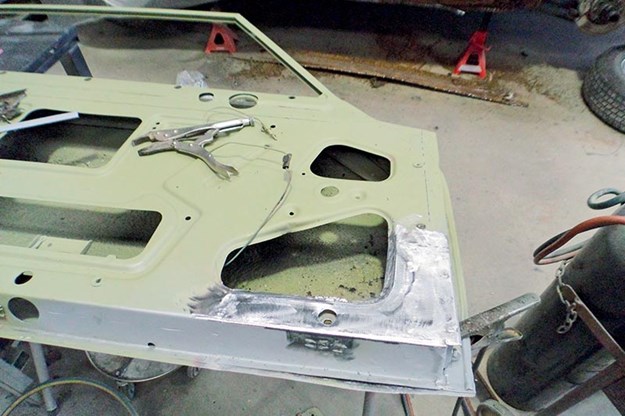 No bog over chicken wire here – steel replaces rust and integrity is restored.
No bog over chicken wire here – steel replaces rust and integrity is restored.
Straight and true
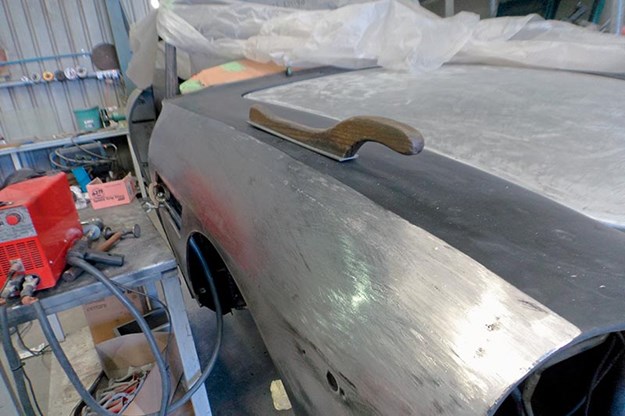 With practised skill and adequate time the result is bound to come.
With practised skill and adequate time the result is bound to come.
On rails
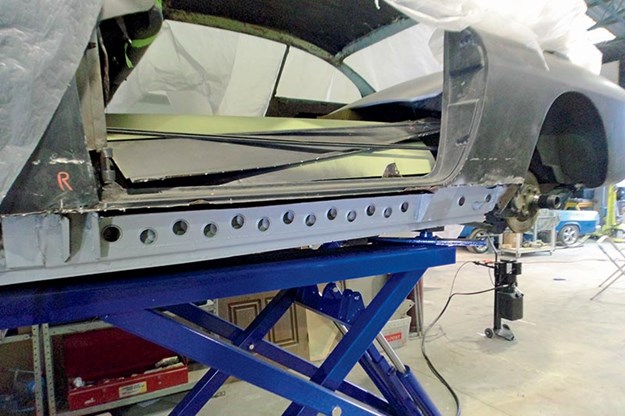 With sill panels stripped chassis sections become accessible.
With sill panels stripped chassis sections become accessible.
Final checks
 The last little blemishes are identified and finessed away.
The last little blemishes are identified and finessed away.
Prancing horse power
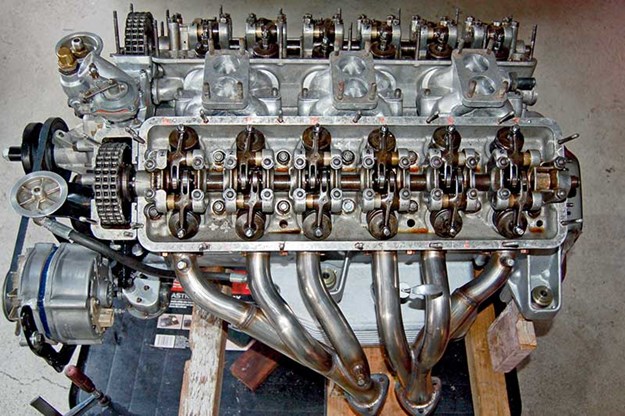 4.0 litres of V12 Ferrari goodness is once again match ready.
4.0 litres of V12 Ferrari goodness is once again match ready.
1964 Ferrari 330 GT specs
Engine 4.0lt V12
Power & torque
224kW @ 6600rpm
390Nm @5000rpm
Transmission Four-speed manual with o/drive fifth
Suspension
Front: Ind. with coil-springs, tube shocks and anti-roll bar.
Rear: Live-axle, leaf springs, tube shocks brakes Discs (f/r)
Classic Australian Family Car Value Guide home page
Muscle Car Value Guide home page
Japanese Classic Car Value Guide home page
Unique Cars magazine Value Guides
Sell your car for free right here
Get your monthly fix of news, reviews and stories on the greatest cars and minds in the automotive world.
Subscribe

.jpg)
















